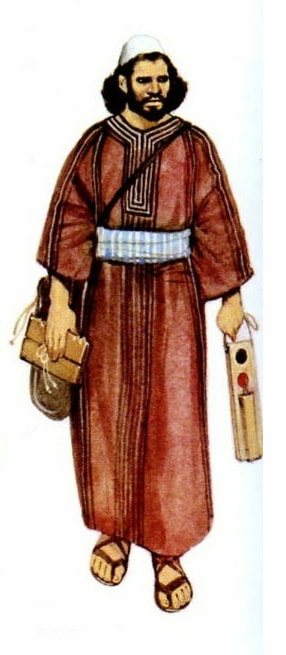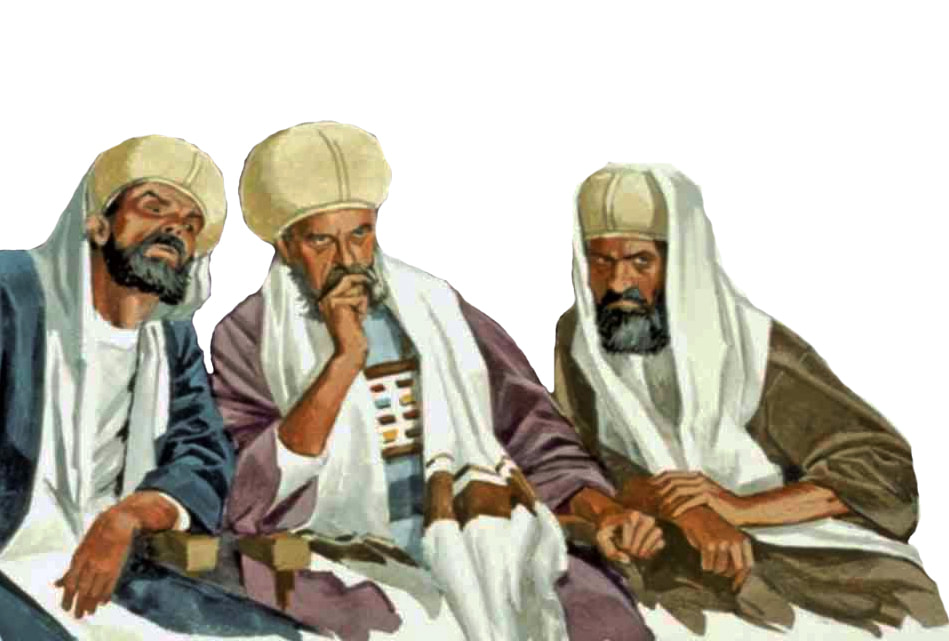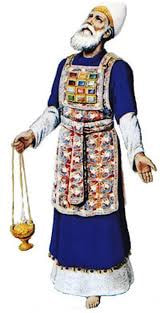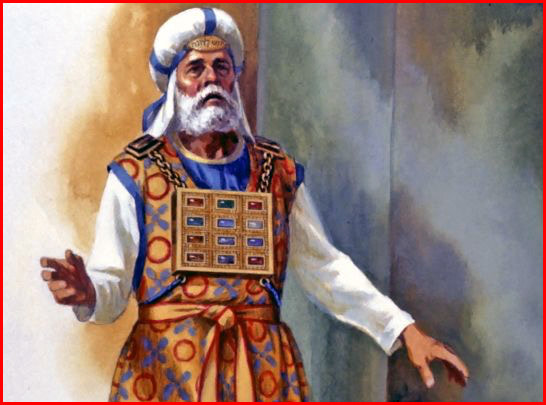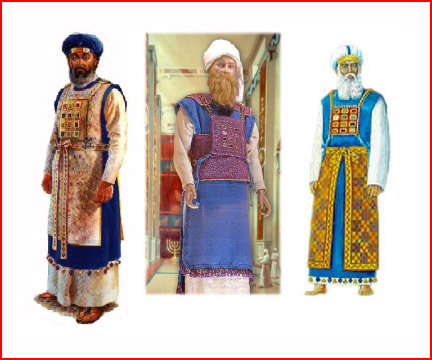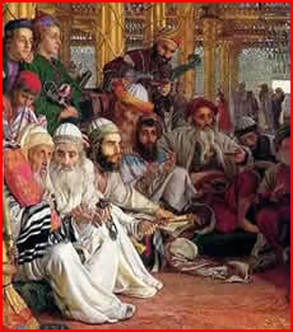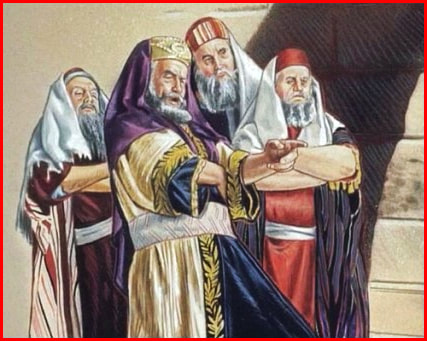| Devotion to Our Lady |
|
- Homepage
-
Daily Thoughts
- 2023 October Daily Thoughts
- Daily Thoughts Lent 2020
- Daily Thoughts for Advent 2019
- Daily Thoughts for October 2019
- Daily Thoughts for September 2019
- Daily Thoughts for August 2019
- Daily Thoughts for July
- Daily Thoughts for June
- Daily Thoughts for Easter 2019
- Daily Thoughts for Lent 2019
- Daily Thoughts for Christmas
- Daily Thoughts Easter 2022
- Sacred Heart
- Holy Ghost
-
Spiritual Life
- Holy Mass Explained
- First Friday Devotions
- First Saturday Devotions
- The Mercy of God
- Vocations
- The Path Everyone Must Walk >
- Gift of Failure
- Halloween or Hell-O-Ween?
- Ignatian Spiritual Exercises >
- Meditation is Soul-Saving
- Spiritual Communion
- Miraculous Medal
- Enrollment in Miraculous Medal
- St. Benedict Medal
- Holy Water
- Advice on Prayer
- Your Daily Mary
-
Prayers
- September Devotions
- Seven Sorrows of Our Lady
-
Novenas
>
- NV-Help of Christians
- NV-Nativity of Our Lady
- NV-Seven Sorrows
- NV- Sorrowful Heart
- NV-Pope St Pius X
- NV-La Salette
- NV-St Michael Archangel
- NV-Immaculate Heart
- NV-Assumption
- NV-Novena for Fathers
- NV-Novena for Your Mother
- NV-St Raphael Archangel
- NV-Souls in Purgatory
- NV-All Saints Day
- NV-Christ the King
- NV-Divine Motherhood
- NV-Guardian Angels
- NV-Rosary
- NV-Mirac Med
- NV- Imm Conc
- NV - Guadalupe
- NV - Nativity of Jesus
- NV-Epiphany
- NV-OL Good Success
- NV-Lourdes
- NV-St Patrick
- NV-St Joseph
- NV-Annunciation
- NV-St Louis de Montfort
- NV-OL Good Counsel
- NV-Last Supper
- NV-Passion
- NV-Pentecost
- NV-Ascension
- NV-Sacred Heart
- NV-Sacred Heart & Perpetual Help
- NV-Corpus Christi
- NV-OL of Perpetual Help
- NV-Queenship BVM
- NV-OL of Mount Carmel
- NV-St Mary Magdalen
- NV- Im Hrt
- August Devotions to IHM
- Immaculate Heart of Mary
- Litany of Dependence
- Prayers to St Mary Magdalen
- Prayers in Times of Sickness Disease & Danger
- Holy Souls in Purgatory
- Meditations on the Litany of Our Lady
- Special Feast Days
- Prayers to Mary (Mon-Sun)
- Litanies to Our Lady >
- Various & Special Needs
- Our Lady of the Rosary
- Our Lady of Mt. Carmel
- Our Lady of Perpetual Help
- Our Lady of Guadalupe
- Other titles of Our Lady
-
Rosary
- Downloads
- Consecration
- Easter Season
-
Holy Week
- Last Seven Words of Jesus >
- Characters of Passion >
- The Last Days of Christ
- Before Palm Sunday
- Palm Sunday
- Monday in Holy Week
- Tuesday in Holy Week
- Wednesday in Holy Week
- Holy Thursday (Last Supper)
- Holy Thursday (Agony & Arrest)
- Night Vigil with Christ
- Good Friday (Pilate & Herod)
- Good Friday (Way of Cross & Crucifixion)
- Saturday in Holy Week
-
Lent
- Ideas for Lent
- Daily Lenten Planner
- Daily Lenten Liturgy
- From Cold to Hot
- Lent with Aquinas
- Lent with Dom Gueranger
- Virtues for Lent
- History of Penance
- How Expensive is Sin?
- Confession of Sins
- Letter to Friends of the Cross
- Sermons for Lent
- Stations of the Cross >
- Lenten Prayers
- 7 Penitential Psalms
- Lenten Psalms SUN
- Lenten Psalms MON
- Lenten Psalms TUE
- Lenten Psalms WED
- Lenten Psalms THU
- Lenten Psalms FRI
- Lenten Psalms SAT
- Lenten Laughs
- Septuagesima
-
Christmas
- Epiphany Explained
- Suggestions for Christmas
- Food For Thought
- Christmas with Aquinas
- Christmas with Dom Gueranger
- Christmas Prayers
- Candles & Candlemas
- Christmas Sermons
- Christmas Prayers SUN
- Christmas Prayers MON
- Christmas Prayers TUE
- Christmas Prayers WED
- Christmas Prayers THU
- Christmas Prayers FRI
- Christmas Prayers SAT
- Twelve Days of Christmas >
-
Advent Journey
- Purgatory
- Christ the King
- Legion of Mary
- Scapular
-
Saints
-
Martyrs for the Faith
>
- Your Daily Martyr >
- All 365 Days of Martyrs
- Cristeros
- St Valentine & Valentine's Day
- Martyrs--Thomas Becket
- Martyrs--John the Apostle
- Holy Machabees
- Age of Martyrdom
- Carmelites of Compiegne
- Martyrs--Peter & Paul
- Martyrs--John the Baptist
- Martyrs--Andrew
- Martyrs--James the Great
- Martyrs--North American
- Martyrs--Seven Holy Sleepers
- Martyrs--Afra
- School of Martyrdom
- Martyrs--Christina
- Desert Saints >
- Saints for Sinners >
- Saints of Mary >
- History of All Saints Day
-
Martyrs for the Faith
>
- Precious Blood
- Synod 2023
-
Catechism
- Catechism Lesson 1
- Catechism Lesson 2
- Catechism Lesson 3
- Catechism Lesson 4
- Catechism Lesson 5
- Catechism Lesson 6
- Catechism Lesson 7
- Catechism Lesson 8
- Catechism Lesson 9
- Catechism Lesson 10
- Catechism Lesson 11
- Catechism Lesson 12
- Catechism Lesson 13
- Catechism Lesson 14
- Catechism Lesson 15
- Catechism Lesson 16
- Catechism Lesson 17
- Catechism Lesson 18
- Catechism Lesson 19
- Catechism Lesson 20
- Catechism Lesson 21
- Catechism Lesson 22
- Bible Study
-
Calendar
- Miracles
- Apparitions
- Shrines
- Prophecies
- Angels Homepage
- Hell
-
Church Crisis
- Conspiracy Theories
- Amazon Synod 2019 >
- Liberalism & Modernism
- Modernism--Encyclical Pascendi
- Modernism & Children
- Modernism--Documents
- The Francis Pages
- Church Enemies on Francis
- Francis Quotes
- Amoris Laetitia Critique
- Danger of Ignorance (Pius X)
- Restore all In Christ (Pius X)
- Catholic Action (Pius X)
- Another TITANIC Disaster?
- The "Errors of Russia"
- CRISIS PRAYERS
- Election Novena 2024
- The Anger Room
- War Zone
- Life of Mary
- Spiritual Gym
- Stupidity
- Coronavirus and Catholicism
- History & Facts
- Books
- Catholic Family
- Children
- Daily Quiz
-
Novena Church & Pope
- Day 01 Church-Pope Novena
- Day 02 Church-Pope Novena
- Day 03 Church-Pope Novena
- Day 04 Church-Pope Novena
- Day 05 Church-Pope Novena
- Day 06 Church-Pope Novena
- Day 07 Church-Pope Novena
- Day 08 Church-Pope Novena
- Day 09 Church-Pope Novena
- Day 10 Church-Pope Novena
- Day 11 Church-Pope Novena
- Day 12 Church-Pope Novena
- Day 13 Church-Pope Novena
- Day 14 Church-Pope Novena
- Day 15 Church-Pope Novena
- Day 16 Church-Pope Novena
- Day 17 Church-Pope Novena
- Day 18 Church-Pope Novena
- Day 19 Church-Pope Novena
- Day 20 Church-Pope Novena
- Day 21 Church-Pope Novena
- Day 22 Church-Pope Novena
- Day 23 Church-Pope Novena
- Day 24 Church-Pope Novena
- Day 25 Church-Pope Novena
- Day 26 Church-Pope Novena
- Day 27 Church-Pope Novena
- Day 28 Church-Pope Novena
- Day 29 Church-Pope Novena
- Day 30 Church-Pope Novena
- Day 31 Church-Pope Novena
- Day 32 Church-Pope Novena
- Day 33 Church-Pope Novena
- Day 34 Church-Pope Novena
- Day 35 Church-Pope Novena
- Day 36 Church-Pope Novena
- Day 37 Church-Pope Novena
- Day 38 Church-Pope Novena
- Day 39 Church-Pope Novena
- Day 40 Church-Pope Novena
- Day 41 Church-Pope Novena
- Day 42 Church-Pope Novena
- Day 43 Church-Pope Novena
- Day 44 Church-Pope Novena
- Day 45 Church-Pope Novena
- Day 46 Church-Pope Novena
- Day 47 Church-Pope Novena
- Day 48 Church-Pope Novena
- Day 49 Church-Pope Novena
- Day 50 Church-Pope Novena
- Day 51 Church-Pope Novena
- Day 52 Church-Pope Novena
- Day 53 Church-Pope Novena
- Day 54 Church-Pope Novena
- Penance Novena
- Daily WeAtheR Forecast
The Greatest and Most Important Week in the Church's Liturgical Year
CLICK ON ANY HOLY WEEK LINK BELOW
Also lots of LENTEN & HOLY WEEK DOWNLOADS on the downloads page (click here)
LITURGICAL PRAYERS FOR EACH DAY OF THE WEEK DURING LENT
| Sundays of Lent | Mondays of Lent | Tuesdays of Lent | Wednesdays of Lent | Thursdays of Lent | Fridays of Lent | Saturdays of Lent |
HOLY WEEK PAGES
| Daily Thoughts | Holy Week Main Page | Before Palm Sunday | Palm Sunday | Last Days of Christ |
| Holy Thursday Last Supper Novena | Good Friday Passion Novena |
| Monday of Holy Week | Tuesday of Holy Week | Wednesday of Holy Week | Holy Thursday (Last Supper) | Holy Thursday (Agony & Arrest) |
| Night Vigil With Christ | Good Friday (Pilate & Herod) | Good Friday (Way of Cross & Crucifixion) | Holy Saturday |
THE CHIEF CHARACTERS OF THE PASSION
| Characters of the Passion Mainpage | The Sanhedrin | Pharisees | Scribes | Saducees | Jewish Crowd | Roman Rulers |
| Judas | Annas & Caiphas | Pontius Pilate | Herod | Barabbas | Dismas the Good Thief | St. Peter | St. John | Mary Magdalen |
THE FOURTEEN STATIONS OF THE CROSS
| Introduction to the Stations of the Cross | Short Version of the Stations of the Cross (all 14 on one page) | 1st Station | 2nd Station | 3rd Station |
| 4th Station | 5th Station | 6th Station | 7th Station | 8th Station | 9th Station | 10th Station | 11th Station | 12th Station | 13th Station | 14th Station |
THE LAST SEVEN WORDS OF JESUS FROM THE CROSS
| Seven Last Words on the Cross (Introduction) | The 1st Word on the Cross | The 2nd Word on the Cross | The 3rd Word on the Cross |
| The 4th Word on the Cross | The 5th Word on the Cross | The 6th Word on the Cross | The 7th Word on the Cross |
PRAYERS AND DEVOTIONS TO THE SEVEN SORROWS OF OUR LADY
| Seven Sorrows Meditations | Short Prayers & Short Seven Sorrows Rosary | Longer Seven Sorrows Rosary |
| 1st Sorrow of Our Lady | 2nd Sorrow of Our Lady | 3rd Sorrow of Our Lady | 4th Sorrow of Our Lady |
| 5th Sorrow of Our Lady | 6th Sorrow of Our Lady | 7th Sorrow of Our Lady |
| Novena #1 to the Sorrowful Heart of Mary | Novena #2 to the Sorrowful Heart of Mary |
LENTEN PAGES
| ASH WEDNESDAY COUNTDOWN | LENT (MAIN PAGE) | DAILY THOUGHTS | DAILY LENTEN LITURGY | DAILY LENTEN PLANNER |
| LENTEN PRAYERS | THE 7 PENITENTIAL PSALMS | IDEAS FOR PENANCE | LENT WITH AQUINAS | LENT WITH DOM GUERANGER |
| HISTORY OF PENANCE | PENANCES OF THE SAINTS | HOW EXPENSIVE IS SIN? | CONFESSION OF SINS | ARE FEW SOULS SAVED? |
| VIRTUES FOR LENT | FROM COLD TO HOT | LENTEN LAUGHS | SERMONS FOR LENT | LETTER TO FRIENDS OF THE CROSS |
| STATIONS OF THE CROSS (INDIVIDUALLY) | ALL 14 STATIONS OF THE CROSS |
| THE LAST DAYS OF CHRIST | SPECIAL HOLY WEEK PAGES |
CLICK ON ANY HOLY WEEK LINK BELOW
Also lots of LENTEN & HOLY WEEK DOWNLOADS on the downloads page (click here)
LITURGICAL PRAYERS FOR EACH DAY OF THE WEEK DURING LENT
| Sundays of Lent | Mondays of Lent | Tuesdays of Lent | Wednesdays of Lent | Thursdays of Lent | Fridays of Lent | Saturdays of Lent |
HOLY WEEK PAGES
| Daily Thoughts | Holy Week Main Page | Before Palm Sunday | Palm Sunday | Last Days of Christ |
| Holy Thursday Last Supper Novena | Good Friday Passion Novena |
| Monday of Holy Week | Tuesday of Holy Week | Wednesday of Holy Week | Holy Thursday (Last Supper) | Holy Thursday (Agony & Arrest) |
| Night Vigil With Christ | Good Friday (Pilate & Herod) | Good Friday (Way of Cross & Crucifixion) | Holy Saturday |
THE CHIEF CHARACTERS OF THE PASSION
| Characters of the Passion Mainpage | The Sanhedrin | Pharisees | Scribes | Saducees | Jewish Crowd | Roman Rulers |
| Judas | Annas & Caiphas | Pontius Pilate | Herod | Barabbas | Dismas the Good Thief | St. Peter | St. John | Mary Magdalen |
THE FOURTEEN STATIONS OF THE CROSS
| Introduction to the Stations of the Cross | Short Version of the Stations of the Cross (all 14 on one page) | 1st Station | 2nd Station | 3rd Station |
| 4th Station | 5th Station | 6th Station | 7th Station | 8th Station | 9th Station | 10th Station | 11th Station | 12th Station | 13th Station | 14th Station |
THE LAST SEVEN WORDS OF JESUS FROM THE CROSS
| Seven Last Words on the Cross (Introduction) | The 1st Word on the Cross | The 2nd Word on the Cross | The 3rd Word on the Cross |
| The 4th Word on the Cross | The 5th Word on the Cross | The 6th Word on the Cross | The 7th Word on the Cross |
PRAYERS AND DEVOTIONS TO THE SEVEN SORROWS OF OUR LADY
| Seven Sorrows Meditations | Short Prayers & Short Seven Sorrows Rosary | Longer Seven Sorrows Rosary |
| 1st Sorrow of Our Lady | 2nd Sorrow of Our Lady | 3rd Sorrow of Our Lady | 4th Sorrow of Our Lady |
| 5th Sorrow of Our Lady | 6th Sorrow of Our Lady | 7th Sorrow of Our Lady |
| Novena #1 to the Sorrowful Heart of Mary | Novena #2 to the Sorrowful Heart of Mary |
LENTEN PAGES
| ASH WEDNESDAY COUNTDOWN | LENT (MAIN PAGE) | DAILY THOUGHTS | DAILY LENTEN LITURGY | DAILY LENTEN PLANNER |
| LENTEN PRAYERS | THE 7 PENITENTIAL PSALMS | IDEAS FOR PENANCE | LENT WITH AQUINAS | LENT WITH DOM GUERANGER |
| HISTORY OF PENANCE | PENANCES OF THE SAINTS | HOW EXPENSIVE IS SIN? | CONFESSION OF SINS | ARE FEW SOULS SAVED? |
| VIRTUES FOR LENT | FROM COLD TO HOT | LENTEN LAUGHS | SERMONS FOR LENT | LETTER TO FRIENDS OF THE CROSS |
| STATIONS OF THE CROSS (INDIVIDUALLY) | ALL 14 STATIONS OF THE CROSS |
| THE LAST DAYS OF CHRIST | SPECIAL HOLY WEEK PAGES |
THE SADDUCEES
|
Who Were the Sadducees? Here is the Sadducee in a Nutshell!
► Sadducees were the dominant group among Jews at the time of Christ. ► They were mainly from the upper classes — the aristocracy and the wealthy. ► Various political, social, and religious roles, including maintaining the Temple. ► Most of the Jewish priests of the Temple came from the ranks of the Sadducees. ► The Sadducees became extinct after the destruction of Herod’s Temple in Jerusalem in 70 A.D. ► They liked and accepted the Roman and Greek influences of the day (Hellenism). ► Their religious focus was based on worship in the Temple, whereas the Pharisees also insisted upon additional daily prayer and study outside the Temple worship. ► They said all divine revelation was contained only in the written Torah (the first 5 books of the Old Testament), and refused the writings of the Prophets and all oral tradition (which the Pharisees accepted). ► Their chief beliefs were that: (1) there is no fate; (2) God does not commit evil; (3) man has free will to choose good or evil; (4) the soul is not immortal; (5) there is no afterlife, and (6) there are no rewards or penalties after death. Cracking the Nutshell of the Sadducees Let us crack the above external nutshell and take a deeper look at what is inside. Our Lord had plenty of enemies surrounding Him—the Scribes, the Pharisees, the Sadducees and the Herodians—each of them having a different set of objections and different views on what Christ was teaching. There is plenty of evidence that in historical fact the main conflict of the infant Church, as of Christ, was with the priestly party of the Sadducees rather than with the Pharisees, as can be seen by the following Sciprtural quotes: ► “And as they [St. Peter and St. John] were speaking to the people, the priests, and the officer of the Temple, and the Sadducees, came upon them, being grieved that they taught the people, and preached in Jesus the resurrection from the dead: and they laid hands upon them, and put them in hold till the next day” (Acts 4:1-3). ► “Then the high priest [a Sadducee] rising up, and all they that were with him―which is the heresy of the Sadducees―were filled with envy. And they laid hands on the apostles, and put them in the common prison” (Acts 5:17-18). At the time of Jesus, the Sadducees and the Pharisees constituted the two principal factions of the Jewish people. They were not “sects,” however, in the strict sense of the word, for they were not distinct from the moral structure of the nation; nor were they religious confraternities like the Essenes, although their fundamental principles were religious. Neither was their outstanding characteristic any given political position as in the case of the Herodians, although they were extremely important even in the political and social field. Rather they represented two currents of thought or tendencies which, though completely opposed to each other, were both based on sacred principles of the Jewish nation. Origins of the Sadducees The origin of the Sadducees remains a mystery. An important and controversial clue is the etymology of the name “Sadducees” (sedûqîm). This word may be derived from the word Tsaddîq (“righteous”), or the name Sadoc (Zadok), who was either high priest, back in the age of King Solomon, or the name of the direct contemporary founder of the Sadducees. It is not possible to choose between the alternatives: the name “righteous ones” may have been adopted as a reaction to the Hasidim movement (from which the early Pharisees arose), who claimed that they were the only pious ones; the name “sons of Sadoc (Zadok)”, on the other hand, may refer to the fact that only the descendants of Sadoc were―according to an ancient tradition―entitled to perform the priestly service in the Temple. However, the Sadducees first appear in the historical record, not as priests, but as a political group. The Jewish historian, Flavius Josephus, mentions them in the context of John Hyrcanus, the Hasmonean high priest and ruler of Juda, from 135-104 BC (Josephus, Antiquities 13:10.5-6). According to Josephus, a guest at a banquet for the Pharisees, accused the Hasmonean high priest, Hyrcanus, of being a bastard child, unfit for the high priesthood. In the uproar that ensued, a Sadducee convinced Hyrcanus to abandon the Pharisees for the Sadducees. However this may be, the Sadducees are known from the middle of the second century BC (around 150), and are introduced in the writings of the Jewish historian, Flavius Josephus, all in one breath with the Pharisees and Essenes. The three movements probably originated in the same climate of national and ethical revival, which was a reaction to the dominance of the Greek culture. The form of worship in the Temple of Jerusalem was considered unclean, because of pagan influences, and was purified in 164 BC; and in 152 BC, one of the members of the Hasmonaean royal family usurped the high priesthood. This was scandalous: the high priesthood was hereditary in the Sadocite (Zadokite) family, and―if we accept that Sadducees means “sons of Sadoc”―the Sadducee movement found its origin in the opposition against the Hasmonaean usurpation of the priesthood. An argument against this interpretation is that the Sadducees usually collaborated with the Hasmonaean kings. The religious Essenes may have originated at the same moment, as a Sadocite sect that considered the Temple still unclean and left Jerusalem to live a monastic type of life. The Sadducees and the Temple Priesthood Whatever their relation to the Hasmonaeans, the Sadducees remained deeply involved in the Temple worship in Jerusalem for more than two centuries (150 BC to 70 AD). The kings were usually supported by the Sadducees, who had great influence on royal policy. Only under the reign of Queen Alexandra Salome (76-67 BC), were the Pharisees influential and their leader, Prince Simeon ben Shetah, formally threw the Sadducees out of the high court (Sanhedrin). But even during these years, the Sadducees retained some power. In the confused years after the death of the queen, they regained much of their former influence. When Herod the Great became sole ruler in 40 BC, he appointed high priests of his own choosing, but the Sadducees remained somehow involved in the management of the Temple, and this was still the case during the Roman occupation (6 BC to 70 AD), when the Roman governors appointed the high priest. It is certain that most high priests came from Sadducee families. The Jewish elite sympathized with the ideas of the Sadducees. It is not clear why: perhaps the interests of the wealthy people were threatened by the Pharisees (who were often common people), which caused the rich Jews to side with the opponents of their own enemies. Another explanation is that the Sadducees were very wealthy themselves. Probably, at least 20 of the 28 high priests in the century between 37 BC and 66 AD were Sadducees. The Sadducees were the ‘party’ of high priests, aristocratic families, and merchants—the wealthier elements of the population. They came under the influence of Hellenism, tended to have good relations with the Roman rulers of Palestine. The main focus of Sadducee life was rituals associated with the Temple. Many priests belonged to the Sadducees according to the Jewish historian, Flavius Josephus, but not all priests were Sadducees. The New Testament shows a close association between the Priests and the Sadducees (Acts 4:1 and 5:17). According to Josephus, Ananus, a Sadducee, had five sons who all became High Priests. The Sadducees were elitists who wanted to maintain the priestly caste, but they were also liberal in their willingness to incorporate Hellenism into their lives, something the Pharisees opposed. While it is probable that the members of the priestly aristocracy were Sadducees, many priests were Pharisees. It was the priests of the Pharisees who were sent to question John (John 1:19-24). And according to Acts 23, both Sadducees and Pharisees made up the Sanhedrin, because Paul rallied the members, who were Pharisees, to his side. The majority of the Sadducees were of sacerdotal rank—that is to say they were priests—and they called themselves Sadducees from the name of Sadoq, the ancient founder of an illustrious sacerdotal family. The Sadducees were one of the three main or chief Jewish political and religious movements in the years between 150 BC and 70 AD. The other movements were the Essenes and the Pharisees. They were—like the Pharisees (and like all of us to some degree or another)―“two-faced”, in the sense that they were, what today we would call, both “Conservative” and “Liberal”. They had a conservative outlook and accepted only the written Law of Moses as contained in the “Torah” (that is to say the first five books of the Bible: Genesis, Exodus, Leviticus, Numbers and Deuteronomy). Yet, on the other hand, they were very Liberal in that they liked and accepted many of the worldly influences coming from the Greek Empire (Hellenism) which was in ascendancy at that time. Many wealthy Jews were Sadducees or sympathized with them, and, consequently, this meant that many, if not most, Sadducees came from the wealthy or upper classes among the Jews—which also explains why they favored Greek (Hellensitic) worldliness. Sadducees Came From the Upper Classes, the Wealthy and the Leaders The majority of the Sadducees were of sacerdotal rank—that is to say they were priests—and they called themselves Sadducees from the name of Sadoq, the ancient founder of an illustrious sacerdotal family. The Sadducees were one of the three main or chief Jewish political and religious movements in the years between 150 BC and 70 AD. The other movements were the Essenes and the Pharisees. They were—like the Pharisees (and like all of us to some degree or another)―“two-faced”, , in the sense that they were, what today we would call, both “Conservative” and “Liberal”. They had a conservative outlook and accepted only the written Law of Moses as contained in the “Torah” (that is to say the first five books of the Bible: Genesis, Exodus, Leviticus, Numbers and Deuteronomy). Yet, on the other hand, they were very Liberal in that they liked and accepted many of the worldly influences coming from the Greek Empire (Hellenism) which was in ascendancy at that time. Many wealthy Jews were Sadducees or sympathized with them, and, consequently, this meant that many, if not most, Sadducees came from the wealthy or upper classes among the Jews—which also explains why they favored Greek (Hellensitic) worldliness. The Sadducean party was generally the party of the wealthy aristocrats. This is not actually stated in the sources; but it is a reasonable conclusion given the fact that they lived near the Temple and saw more of their needs fully satisfied by having their lives intertwine with the nobility. Josephus says they were able to persuade none but the rich, meaning among other things that they had a small following of their (wealthy and aristocratic) peers, whereas the Pharisees were backed by the common people. In a certain sense, their Conservatism gave birth to their Liberalism. With their attitude of religious conservatism, they legally avoided the heavy burdens (Matthew 23:4) imposed by the Pharisees, while, at the same time, the door was left open for an acceptance and understanding with Hellenism and the Graeco-Roman culture. Hence the Sadducees drew their support from the nobility and governing classes, which were necessarily obliged to maintain relations with the non-Jewish world. The Sadducees held more of the leadership positions, but most frequently had to submit to the demands of the Pharisees. Because the people backed the Pharisees, the Sadducees were forced to observe the Pharisees' oral tradition. This they did not wish to do; they preferred to be unconstrained by customs and deal with the written law only. Written laws left uninterpreted were vague, which would mean that they were free to decide what they meant. But the Pharisees usually got their way, even when a Sadducee was High Priest. Arrogant, Rude, Wild and Barbarous! You would expect the “upper classes” and the wealthy folk to have a certain noble pedigree in their attitudes and behavior! Not so! Even the same is true today—it is amazing to see the large percentage of ‘miscreants’ or ‘sinners’ coming from the ranks of the middle classes, upper classes, governing bodies and what is left of the nobility in this world of democracy and independence! Though the Sadducees were conservative in religious matters, their wealth, their haughty bearing, and their willingness to compromise with the Roman rulers aroused the hatred of the common people. Back in Our Lord’s time, the famous Jewish historian, Flavius Josephus, writes thus of the Sadducees: “the behavior of the Sadducees towards another is in some degree wild, and their conversation with those that are of their own party is as barbarous as if they were strangers to them” (Josephus, Jewish War, 2:166). The Opposition of the Sadducees to Jesus The End of the Road for the Sadducees After the destruction of Jerusalem and its Temple in 70 AD, there was no room for the Sadducees any more. They were too closely linked to the worship in the Temple, in which their lives and political authority were so intimately bound up, so that after Roman legions destroyed the Temple, the Sadducees ceased to exist as a group, and mention of them quickly disappeared from history. |
Web Hosting by Just Host


